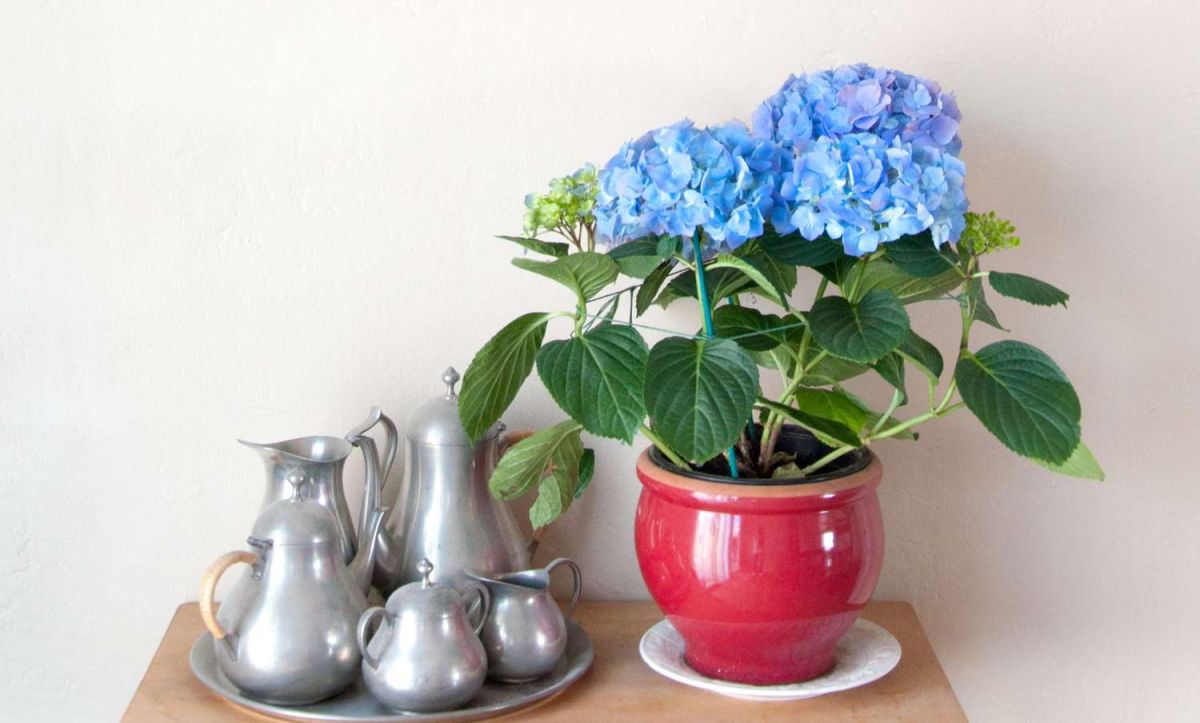The Ultimate Guide To Growing Gorgeous Hydrangea House Plants

Hydrangea House Plant: A Gorgeous Addition to Your Indoor Garden
What do you mean by a hydrangea house plant?
A hydrangea house plant refers to the indoor cultivation of hydrangeas, which are popular flowering plants known for their vibrant and colorful blooms. While hydrangeas are typically grown outdoors, they can also thrive as houseplants, bringing their beauty and elegance indoors.
How to grow a hydrangea house plant?
Growing a hydrangea house plant requires attention to its specific needs. Here is a step-by-step guide on how to grow and care for a hydrangea indoors:
1. Choose the right hydrangea variety:
Hydrangeas come in different varieties, such as mophead, lacecap, and panicle. Select a variety that suits your indoor gardening space and preferences. Mophead hydrangeas, with their large rounded flower clusters, are particularly popular for indoor cultivation.
2. Provide the optimal environment:
Hydrangeas thrive in bright, indirect sunlight. Place your plant near a window that receives filtered light throughout the day. Avoid exposing the plant to direct sunlight, as it can scorch the leaves. Maintain a temperature between 60-70°F (15-21°C) during the day and slightly cooler temperatures at night.
3. Choose the right container:
Select a container that has drainage holes to prevent waterlogging. Hydrangeas prefer well-draining soil, so use a potting mix specifically formulated for indoor plants. Ensure the pot is large enough to accommodate the plant’s root system and allow for growth.
4. Watering and humidity:
Hydrangeas require regular watering to keep the soil moist but not waterlogged. Check the soil’s moisture level by inserting your finger about an inch deep into the soil – if it feels dry, it’s time to water. Mist the leaves regularly to increase humidity, as hydrangeas appreciate slightly higher humidity levels.
5. Fertilize moderately:
Feed your hydrangea house plant with a balanced water-soluble fertilizer once a month during the growing season. Avoid excessive fertilization, as it can lead to salt build-up in the soil, causing damage to the plant.
6. Pruning and maintenance:
Prune your hydrangea house plant in early spring to encourage new growth. Remove faded flowers and any dead or damaged stems. Regularly inspect the plant for pests or diseases, and take prompt action if necessary.
What is known about hydrangea house plants?
Hydrangea house plants are known for their stunning beauty and variety of colors. These plants belong to the Hydrangeaceae family and are native to Asia and the Americas. They are often cultivated outdoors but have gained popularity as indoor plants due to their ability to adapt to indoor environments.
Hydrangeas are characterized by their large, showy flower clusters, which can be white, pink, blue, or purple, depending on the variety and soil pH. The color of the flowers can even change based on the pH level of the soil. They are also known for their lush foliage, with leaves that are glossy and serrated.
These plants are relatively low-maintenance and can thrive for many years if provided with the right care. When properly cared for, hydrangea house plants can brighten up any indoor space, adding a touch of elegance and charm.
Solution to common issues faced while growing hydrangea house plants
While growing hydrangea house plants can be a rewarding experience, there are a few common issues that plant enthusiasts may encounter. Here are some solutions to help you overcome these challenges:
1. Yellowing leaves:
If your hydrangea’s leaves are turning yellow, it may indicate overwatering or poor drainage. Ensure that the plant’s soil is well-drained and adjust your watering routine accordingly. Allow the top inch of soil to dry out before watering again.
2. Lack of blooms:
If your hydrangea isn’t blooming, it may be due to insufficient light or incorrect pruning. Ensure your plant receives adequate, indirect sunlight and avoid over-pruning, as this can remove the buds that would develop into flowers.
3. Pests and diseases:
Common pests that can affect hydrangeas include aphids, spider mites, and powdery mildew. Regularly inspect your plant for signs of pests or diseases, and take appropriate measures to control them. This may involve using organic insecticidal soaps or neem oil.
Additional Information about Hydrangea House Plants
Here are some additional tips and information to enhance your understanding and care for hydrangea house plants:
1. Soil pH and flower color:
The color of hydrangea flowers can be influenced by the pH level of the soil. Acidic soil (pH below 7) tends to produce blue flowers, while alkaline soil (pH above 7) results in pink flowers. You can even alter the color by amending the soil’s pH.
2. Winter dormancy:
Hydrangeas undergo a period of winter dormancy, during which they may shed their leaves. This is a natural process, and the plant will regrow leaves when the growing season returns. Reduce watering during dormancy to prevent root rot.
3. Propagation:
Hydrangeas can be propagated through stem cuttings. Take a 6-inch cutting from a healthy stem, remove the lower leaves, and dip the cut end in rooting hormone. Plant the cutting in a well-draining potting mix, keep it moist, and place it in a warm location with indirect sunlight until roots develop.
Conclusion
Hydrangea house plants are a delightful addition to any indoor garden. With their stunning blooms and lush foliage, they bring beauty and elegance to your living space. By providing the right environment, proper watering, and regular care, you can enjoy the vibrant colors and graceful presence of these enchanting plants all year round.
FAQs about Hydrangea House Plants
1. Can hydrangea house plants tolerate direct sunlight?
No, hydrangeas prefer bright, indirect sunlight. Direct sunlight can scorch their leaves, so it’s best to place them near a window that receives filtered light.
2. How often should I fertilize my hydrangea house plant?
Fertilize your hydrangea once a month during the growing season using a balanced water-soluble fertilizer. Avoid excessive fertilization, as it can harm the plant.
3. Can I change the color of my hydrangea’s flowers?
Yes, you can alter the color of hydrangea flowers by adjusting the pH level of the soil. Acidic soil produces blue flowers, while alkaline soil results in pink flowers.
4. Should I mist my hydrangea’s leaves?
Yes, misting the leaves of your hydrangea house plant can help increase humidity levels, which they appreciate. However, avoid misting excessively, as it can encourage fungal diseases.
5. How do I prune my hydrangea house plant?
Prune your hydrangea in early spring by removing faded flowers and any dead or damaged stems. Avoid heavy pruning, as it can reduce the plant’s ability to produce new blooms.

I am a beginner writer who continues to learn and consistently creates informative articles to express the ideas that I master.